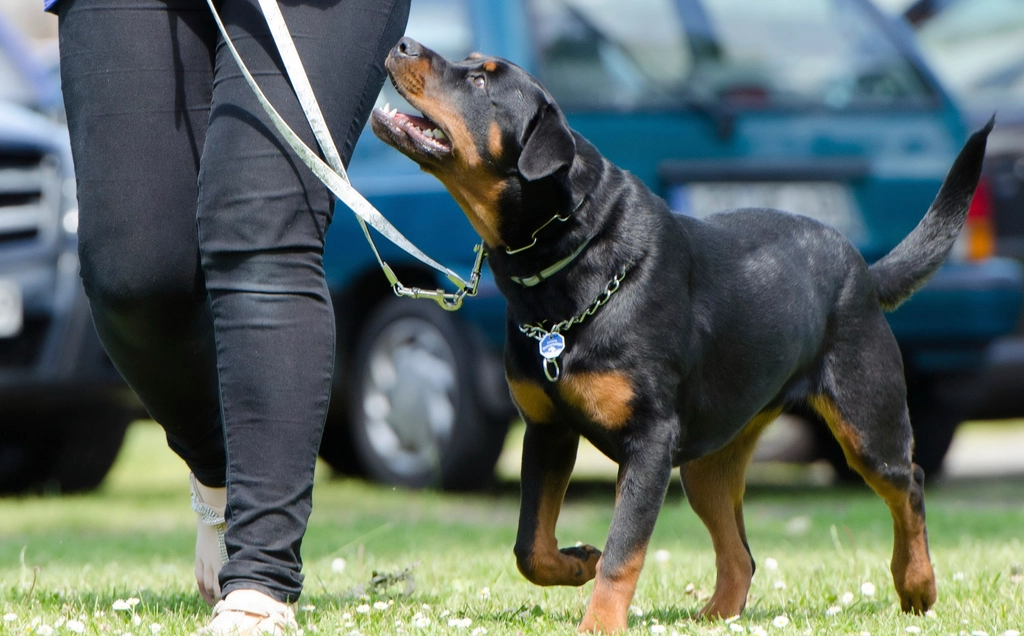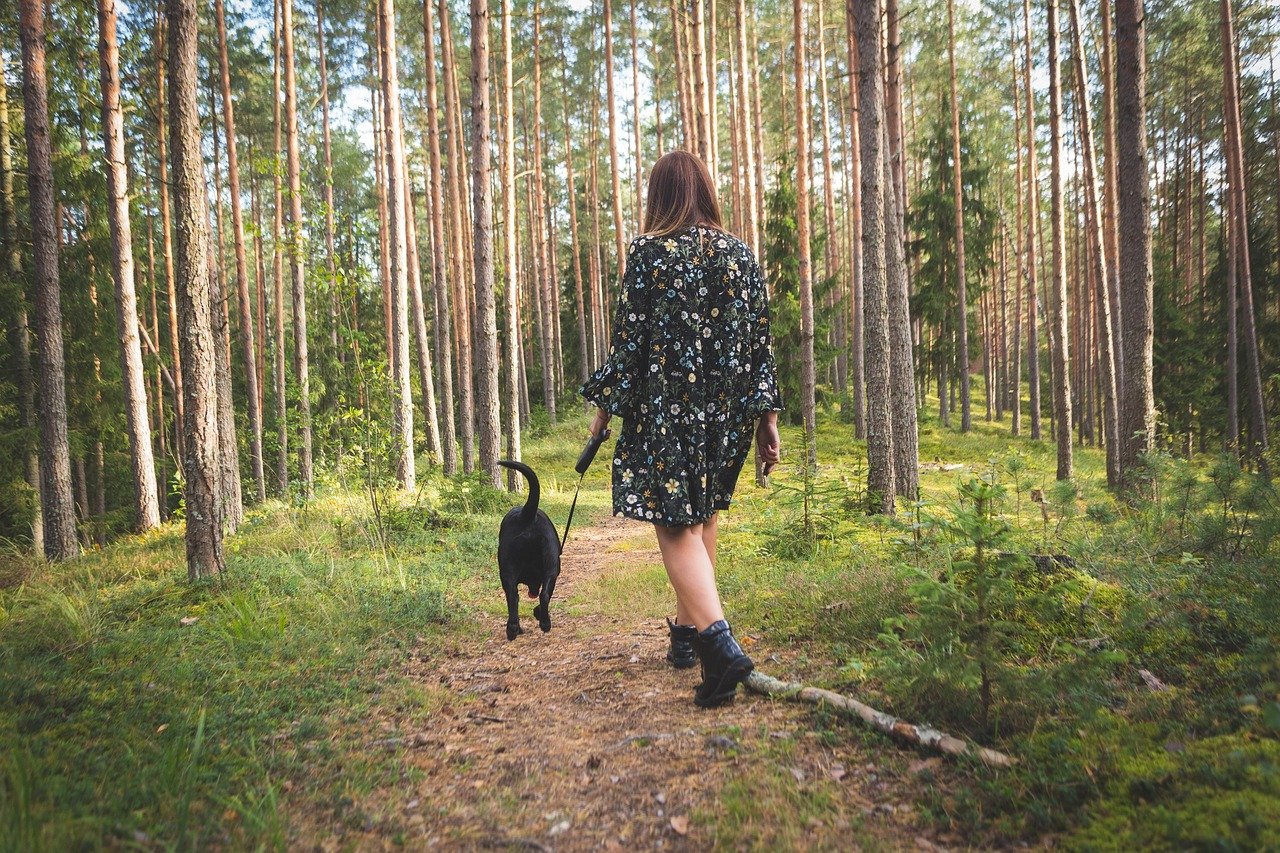Have you ever looked into your dog’s eyes as you grab the leash and wondered what’s really going through their mind? Those excited tail wags and playful barks might make it seem like every walk is pure joy, but the truth is a little more complicated. Just like us, dogs have their own likes and dislikes—even when it comes to their favorite daily adventure. Sometimes, what seems like fun to you can actually be a source of stress, discomfort, or even fear for your furry friend. If dogs could talk, you might be shocked at what they’d say about your daily strolls together. Here are seven things your dog secretly hates about walks, but just can’t tell you.
Loud Noises and Busy Streets
For most dogs, the world is a symphony of sounds—some delightful, others downright terrifying. When you walk your pup along a busy road, the roar of passing trucks, honking horns, and the screech of brakes can send their senses into overdrive. Imagine how you’d feel stuck in a never-ending rock concert, but with no way to ask for earplugs. Dogs’ hearing is much more sensitive than ours, so every unexpected noise can feel magnified and overwhelming. It’s no wonder some dogs try to drag you away or freeze up near traffic.
These noises aren’t just annoying for your dog; they can trigger real anxiety. Some pups may become hyper-vigilant, constantly scanning for the next startling sound. Others might start associating walks with fear, making them hesitant to leave the house at all. If your dog seems jumpy or pulls toward quieter areas, they’re probably just looking for a little peace. Try to steer clear of the busiest streets, and stick to calm routes whenever you can.
Uncomfortable Collars and Harnesses

That cute new collar or sturdy harness you picked out with love may look great, but it might not feel so awesome to your dog. If the fit is just a bit too tight, it can pinch, rub, or make breathing tough. On the flip side, if it’s too loose, it can chafe or tangle in their fur. Some materials can cause itchiness or even allergic reactions, especially on sensitive skin around the neck or armpits. If your dog scratches, shakes, or tries to wriggle out of their gear, it’s a big red flag.
Think about how you’d feel running a marathon in shoes that don’t fit. Every step would be miserable. For your dog, a poorly chosen or fitted collar or harness can turn every walk into a frustrating ordeal. Always check for signs of discomfort—rubbing, hair loss, or redness. Experiment with different styles, and don’t be afraid to ask your vet or a professional trainer for help getting the fit just right.
Too Much or Too Little Control

Dogs love to explore, sniff, and sometimes wander a little off the path. Being yanked back constantly on a tight leash can feel suffocating—not to mention confusing if they’re not sure what you want. On the other hand, too much freedom in a busy area can be overwhelming, making your dog feel unsafe or unsure. The key is balance, but that’s easier said than done.
If you notice your dog pulling, zigzagging, or stopping suddenly, they might be trying to communicate how they feel about the leash. A tense leash can increase stress and even lead to leash-reactivity—where your dog barks or lunges at passersby. Giving your dog enough slack to sniff and explore, while also keeping them safe, will make walks more enjoyable for both of you. Training, patience, and a good-quality leash can work wonders.
Being Forced to Interact With Strangers (Human or Canine)

Not all dogs are social butterflies. Your pup might not want to meet every person or dog you pass, even if you think it’s a friendly gesture. For some, these random encounters are awkward, stressful, or even scary. Imagine being hugged by strangers every time you left the house—it’s not everyone’s idea of a good time.
Dogs communicate comfort and boundaries through body language, but it’s easy for people to miss the signs. A tucked tail, averted eyes, or stiff posture can all mean “no, thank you.” Pushing your dog to greet others or allowing off-leash dogs to run up can make walks something to dread. Give your dog the choice to approach or avoid others, and respect when they’d rather just keep moving.
Hot or Cold Sidewalks
We often forget that dogs don’t wear shoes. On a blazing summer day, the pavement can get hot enough to burn their sensitive paw pads. In winter, icy sidewalks and salty slush can sting and crack their skin. If you’ve ever dashed barefoot across a scorching driveway or tried to walk on icy ground, you know just how unpleasant it can be.
Your dog may try to show discomfort by picking up their feet, panting heavily, or trying to walk on grass instead. Always check the ground with your hand before heading out, and aim for cooler times of day in summer or stick to cleared paths in winter. Paw wax or booties can help protect your pup’s feet, but nothing beats a little extra thought and care.
Rushed Walks With No Time to Sniff
For dogs, sniffing isn’t just a way to pass the time—it’s how they read the world. Each scent tells a story, from who passed by to what’s new in the neighborhood. When you rush your dog along, tugging them away from every interesting smell, it’s kind of like scrolling past every headline in your news feed without reading a word.
Sniffing helps dogs relax and process their environment. It’s mentally stimulating, and it can even reduce stress. If your dog is always straining to sniff, dragging them along can create frustration and anxiety. Try slowing down and letting your dog enjoy the world nose-first. You’ll both discover more than you expect.
Unexpected Changes and Inconsistency

Dogs are creatures of habit. Sudden changes in their walking route, time, or routine can throw them off balance. Maybe you started taking a shortcut through a noisy construction site, or switched your walking schedule from morning to midday. These shifts might seem minor to you, but they can feel huge to your dog.
Consistency gives dogs a sense of security. When the routine changes unexpectedly, some dogs become anxious or reluctant to go out. Others may act out or pull in new directions. If changes are unavoidable, try to introduce them gradually and offer extra reassurance. Your calm, steady presence can help turn a confusing situation into a new adventure.
Walks are often the highlight of your dog’s day, but that doesn’t mean they love everything about them. From uncomfortable gear to overwhelming environments, the seven issues in this list are things your dog might silently struggle with. By paying closer attention to their body language and preferences, you can turn every walk into a more enjoyable and stress-free experience. After all, walks aren’t just about exercise—they’re about bonding, exploration, and trust. And when your dog feels heard, even without words, those daily strolls become moments of true joy for you both.

Linnea is a born and bred Swede but spends as much time as possible in Cape Town, South Africa. This is mainly due to Cape Town’s extraordinary scenery, wildlife, and atmosphere (in other words, because Cape Town is heaven on earth.) That being said, Sweden’s majestic forests forever hold a special place in her heart. Linnea spends as much time as she can close to the ocean collecting sea shells or in the park admiring puppies.





